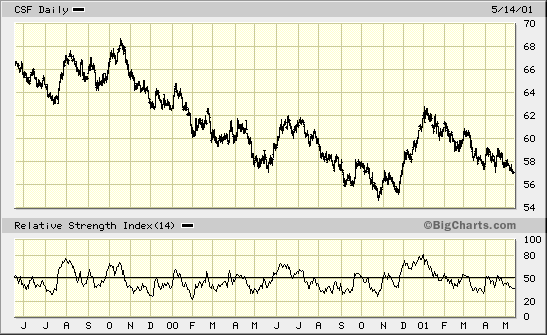Currency Outlook Supportive of Gold's Developing Bull Market
The global currency outlook as it now stands sends two powerful messages to investors, bankers and politicians the world over: a.) the U.S. dollar's day as the currency du jour of the world is ending, and b.) gold is undeniably heating up for a meteoric bull market to begin this year, as the currencies which serve as gold market proxies reflect.
Beginning our overview of the international currency scene at home, we find many troubling aspects in the U.S. dollar outlook, not the least of which is the country's exploding trade debt. Last year's trade debts have been reported higher than previously estimated at $435.38 billion, up $104 billion in twelve months at an annualized rate of gain of 31%. This represents the current account deficit including all services, travel, as well as merchandise.
If this disturbing trend is allowed to continue we will undoubtedly see forecasts showing an unprecedented trillion dollar trade deficit sometime next year! Addressing this alarming development, Lawrence Patterson, editor of Criminal Politics, wrote: "The dollar crisis is being precipitated right now because the dollar was expected to decline as the U.S. economy weakened. Instead, the dollar is rising!" Economists are nonplused at this and cannot figure it out. It is not supposed to work that way.
"The rising dollar in spite of our weakening economy will simply mean that we cannot export as much merchandise, and cheap Chinese, Mexican and Canadian merchandise will get even cheaper.
"Thus, as the weeks go on during this period of economic decline, our trade debts will explode even faster rather than slowing down, so the 31% annualized rate of gain could come out to be even higher."
We differ from Patterson's analysis only as to the timing of the expected crisis-Patterson expects it to begin in 2002, but we have strong reason to believe it will begin this year. The basis of this analysis can be seen in any of various charts of the U.S. Dollar Index. For example, the long-term weekly chart of the dollar index shows a clearly-defined dominant intermediate cycle of roughly five months, three of which are equal to the dominant long-term cycle, and six of which equal the "master cycle." All of these cycles together control the value of the dollar on the international market, not bank or economic policy as most erroneously assume. The fact is that these dominant, controlling cycles are all converging in the "hard down" phase in the late summer and fall of this year. The unavoidable consequence of this cyclical convergence will be a drastic decline in the value of the dollar relative to other major world currencies. More presciently, this serves as an advance notice that the gold market will soon explode in response to the negative fundamental events which will accompany the dollar's demise.
Moreover, the major world currencies whose fluctuations are most in line with the gold market-namely, the Swiss Franc, the D-Mark, and to a lesser extent, the Euro-not to mention commodity-driven currencies like the Canadian Dollar-all support this outlook of a declining U.S. dollar and a rising gold market.
For example, the long-term chart of the Swiss Franc (basis CME) shows a bear market decline of 4 sections, which is the norm for most bear markets. Further, the SF's dominant short-term, intermediate-term and long-term cycles all bottomed between February and March of this year! This means the last of the technical weakness and excess supply that served to depress the SF's value over the past few years has largely abated, and the SF is now free to seek its level at much higher values than those of past years. Even more conspicuous, from a chart analyst's view, is that a three-year declining channel has been broken, which only emphasizes that the last remaining lines of supply have been absorbed. Expect a bull run in the Swiss Franc to develop this year, one that will last some time.

Canada's dollar is close to ending a long-term bear market, as well. Already the dominant long-term cycle that governs C-dollar fluctuations has bottomed, only a little more time has been required to work off the excess supply and weakness that has hampered the value of this currency. Our analysis shows that, based on cycle positions and trendlines, the September-October timeframe will very likely see an important reversal take place-perhaps the beginning to a new bull market. As the Canadian economy is much more dependent that the U.S. economy on gold prices, Canada certainly stands to benefit from the emerging bull market in gold this year and in years to come.
Of interest to the gold producing nation of South Africa, the Rand has produced an important cyclical bottom-a double bottom at that-after a lengthy slide in value over the last several years. This year should be a meaningful year for the Rand once the reversal begins, which is likely by summer.
Finally, the British Pound has bottomed after a nearly 3-year slide in value, and its chart reflecting a currency boasting particular strength. Its dominant long-term cycle bottom took the form of a double bottom with the second bottom higher than the first; in other words, a higher low. The Pound is within kissing distance of breaking above the fourth and final line of a declining channel, a move which would signal to the bulls that the Pound is a strong swap. Based on our cycle analysis this move should take place sometime next month, if not before.


















